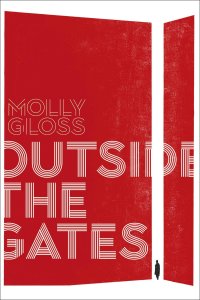Russell Letson reviews Daryl Gregory
Daryl Gregory’s Afterparty (like Joe Haldeman’s recent Work Done for Hire) takes a familiar kind of thriller and sets it in a nearish future (about 20 years ahead) with just enough new-and-improved tech to put a science-fictional edge on its chase-intrigue-mystery elements – for example, very smart phones (here ‘‘pens’’ with virtual screens) and panopticon powers available to both legal and illicit operators. But the central speculative Big Idea here is neurochemical: designer drugs for all occasions, offering do-it-yourself reconfiguration of the psyche on a short-term or (sometimes) permanent basis:
The glories of the DIY smart drug revolution. Any high school student with a chemjet and an internet connection could download recipes and print small-batch drugs. The creative types liked to fuck with the recipes, try them out on their friends. People swallowed paper all the time without knowing what they were chewing. Half the residents of the NAT [neuro-atypical] ward weren’t addicts; they were beta testers.
One such experimental drug, NME 110, street name Numinous, supplies both the book’s McGuffin and the enabling device for a consideration of the nature of the mind. The drug convinces its users that some caring higher power, generally a divinity, is as real as a box of corn flakes or a tire iron: pop a pill and meet your own personal god, or at least a loa or a nifty imaginary friend. The book’s protagonist, Lyda Rose, was part of NME 110’s development team at the start-up Little Sprout and also one of its first victims. Nearly a decade earlier, a massive overdose of it at a buyout-celebration party sent her and her co-workers into a nightmare of convulsions and madness, climaxing in the murder of Lyda’s wife. Since then, each survivor has carried a subjective divinity. Lyda’s is the angelic Dr. Gloria, who acts as a smart-mouthed combination of raisonneur, conscience, and Greek chorus, and flies off in a huff when Lyda does something particularly offensive. Lyda knows, rationally, that Dr. G is a creation of her own chemically altered brain, but maintaining that awareness is a constant struggle, and less-determined Numinous users remain utterly sure of the reality of their particular ‘‘religious’’ experiences and act accordingly.
That explains why we meet Lyda – now 42, guilt-haunted, addicted in any number of ways, and officially, if artificially, crazy – in the neuro-atypical ward of a Toronto mental hospital. She has been content to remain hunkered down there for eight months, but the suicide of a new inmate shocks her out of her stasis when she recognizes the kid’s symptoms as those of withdrawal from NME 110. So Lyda agrees to a kind of parole from the hospital, monitored by an implanted chip that will track her location and intoxicant-free condition. Her intention, however, is not to live clean and sober, but to find and stop whoever is making and distributing Numinous.
What follows is a chase-thriller, a noir mystery, and an international road-trip adventure, with a cast that is mostly crazy, criminal, or both. Lyda’s crew for the search is conventionally motley: fellow NAT inmate Olivia ‘‘Ollie’’ Skarsten, a tiny, paranoid-obsessive-compulsive ex-Special-Forces op/security spook; ‘‘batshit crazy’’ (but nice-kid) Bobby, who believes his soul dwells in a plastic aquarium treasure chest; nerdy former co-worker turned Big Pharma exec Rovil Gupta, whose Numinous-induced deity is elephant-headed Ganesh. Chasing after Lyda and the source of Numinous are an undetermined number of dangerous players, including the Millies, a matriarchal Afghan-expatriate drug cartel; the forces of law and order and normative sanity; and whoever is giving orders to ‘‘the Vincent,’’ a psycho hit man/inquisitor whose pathological coldness (like the Numinous-heads’ sense of the divine) comes out of a pill bottle. (Otherwise, he’s just timid, agoraphobic Vinnie, breeder of itty-bitty genetically engineered bison.)
The book shifts among several viewpoints: the first-person main thread with Lyda, separate third-person threads for Vinnie/the Vincent and a ten-year-old girl whose identity must remain behind the Spoiler Curtain (at least until half-time), plus a series of cleverly titled and apparently omniscient inter-chapter ‘‘Parables’’ (‘‘The Parable of the Girl Who Died and Went to Hell, Not Necessarily in That Order’’; ‘‘The Parable of the Child Thief’’) signed ‘‘G.I.E.D.’’ (That shoe takes quite a long time to drop definitively.)
Lyda and company’s road trip takes us through frat-boy dope parties (featuring GFD – ‘‘gay for a day’’ – pills), store-front churches (also fronts for Numinous distribution), the Millies’ home-base neighborhood/maze, First-Nations cross-border cigarette-smugglers, plus the usual run of anonymous hotel rooms, late-night diners, saloons of high and low repute, and the haunts of the wealthy, powerful, and corrupt. The intellectual side of the trip recalls Greg Egan’s ‘‘Mister Volition’’ or ‘‘Chaff’’: an adventure in neurochemistry and mental plasticity that invites us to consider just how crazy we can be and still retain a humanity that is recognizable, decent, and functional. The divinities conjured up by NME 110 might not have objective reality, but they clearly are born of something real in the minds of their hosts. Then there is the question of Vinnie/the Vincent. We don’t spend a great deal of time with him, but what we do is chilling. Getting information out of a Numinous user is proving difficult, thanks to the sense of spiritual certainty it provides, which gives the Vincent pause.
What if his own medication was interfering with the job? Maybe if he had some of the emotional sensitivity that he possessed when he was off duty and off the meds, then he could figure out where Rudy was vulnerable. But off the meds, the Vincent wouldn’t have the stomach for the job at all.
It was a conundrum.
Maybe he could grab somebody off the street – an innocent, a little girl, perhaps – and torture her in front of the pastor? But that was crazy. Where was he going to find a little girl at this time of night?
This combination of clarity and utter lack of empathy is clearly an artifact of a drug – Vinnie could never do those terrible things. But it’s Vinnie who takes the pills and spends the money on miniature bison. And, over on the other team, who is the real Ollie – the medicated waif or the omnicompetent secret agent who emerges when she’s off her meds?
These philosophical and moral questions are implicit in the novel, but one could be forgiven for putting them to one side while going along for the story’s twisty, gritty ride – those matters of mind and motive and personhood drive more familiar mysteries: who is trying to resurrect NME 110 and why? What really went down at that disastrous party? Which bad guys are the baddest and most central to the machinery that sends Lyda and friends and pursuers from Toronto to New York to the New Mexico desert and back in time to the tangled roots of all their troubles? This is a real science-fiction crime thriller: the old evils and insanities are all there, given new twists by the double-edged blades of science and technology. And, like the best crime and SF novels, those moral and philosophical questions linger, after the mere whodunnit puzzles have been solved.








